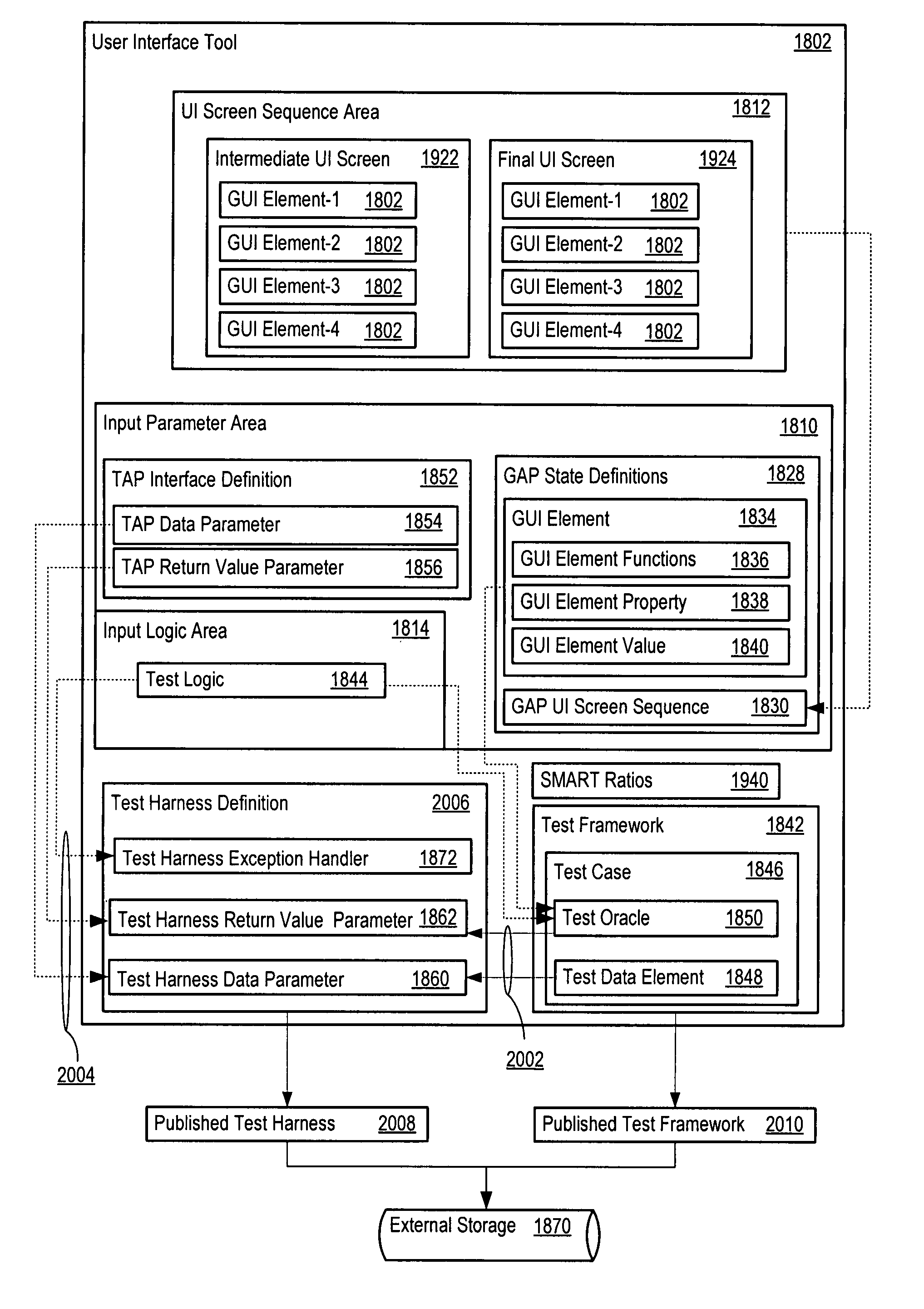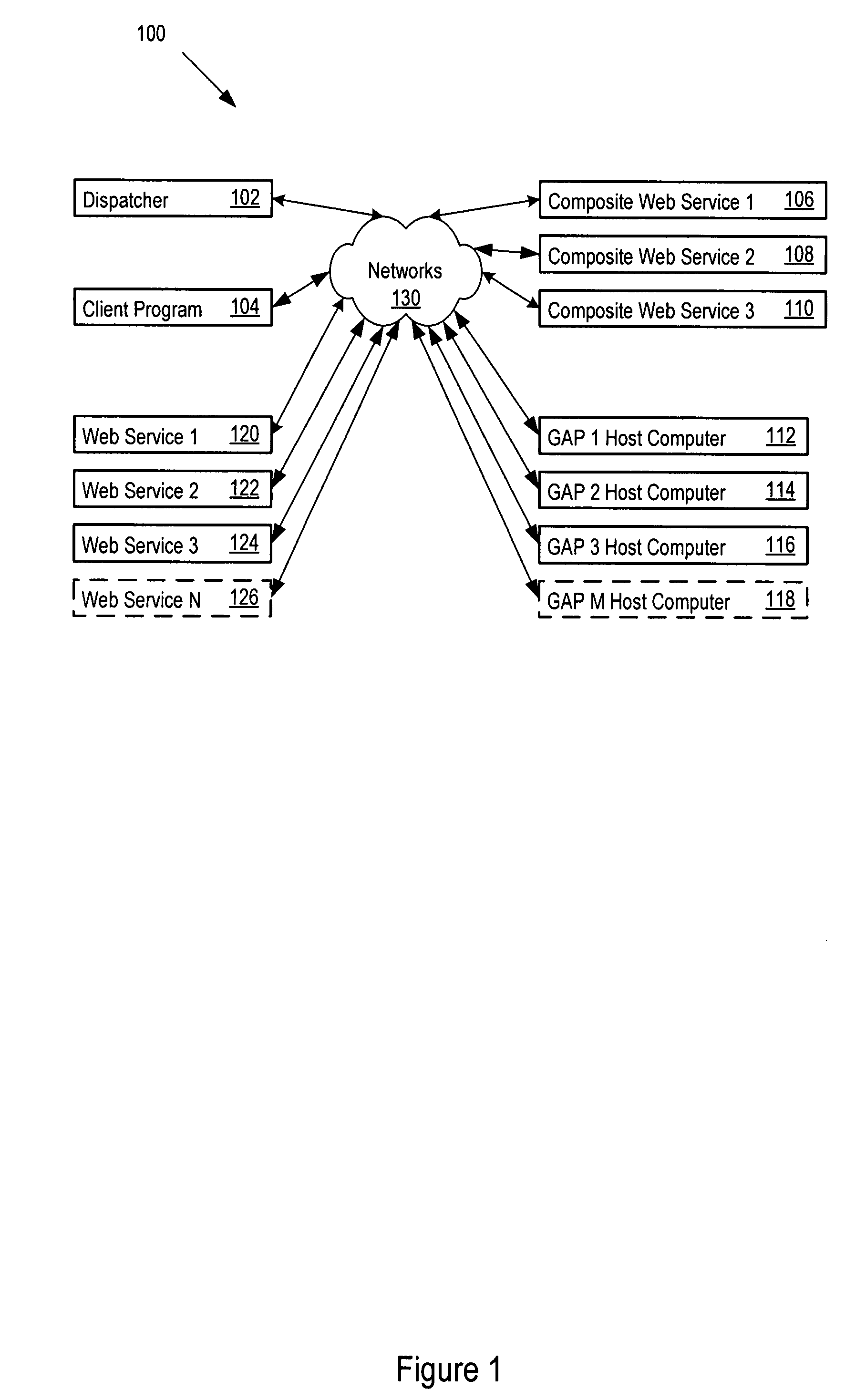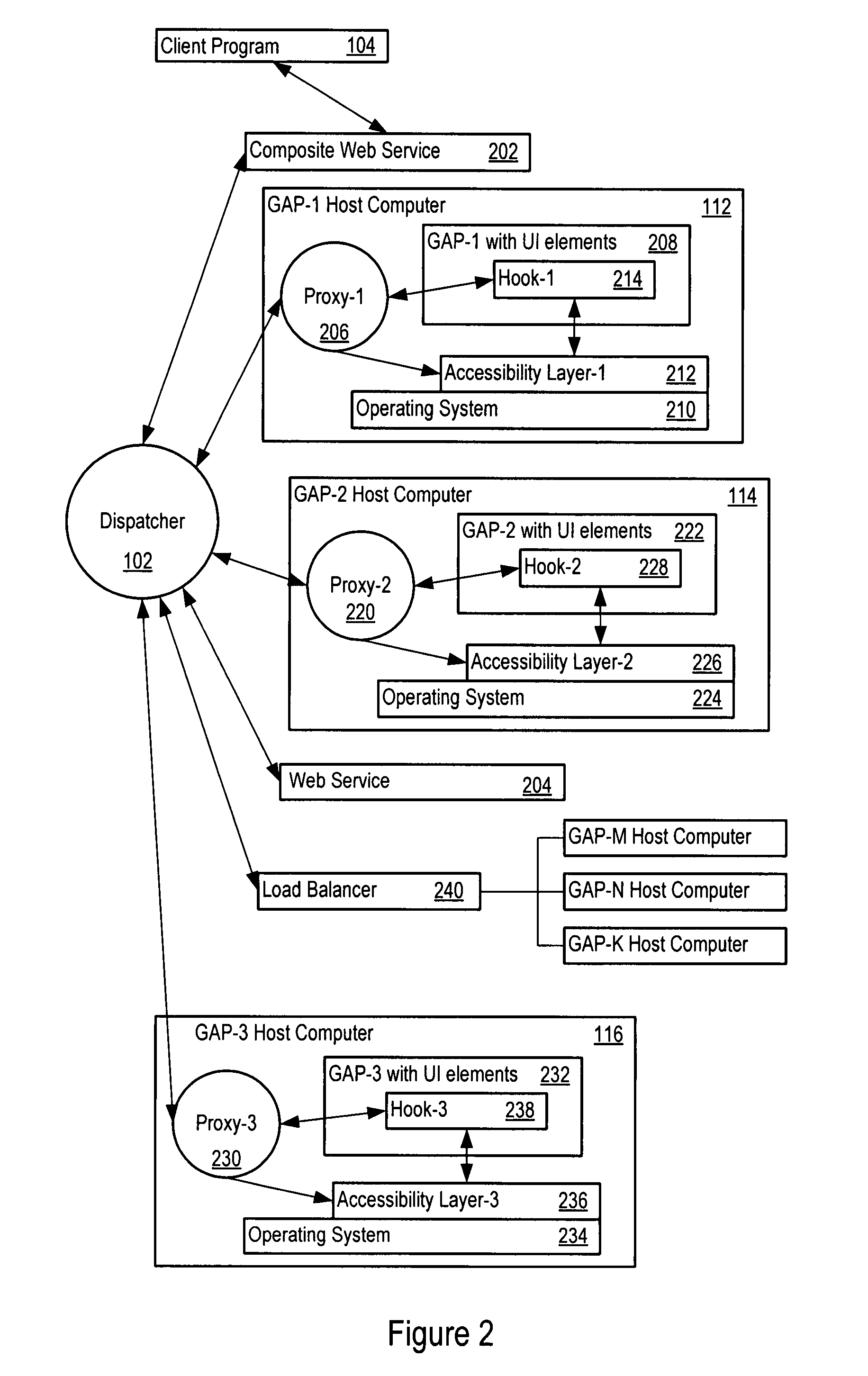Automatic test generation for reference testing
a reference testing and automatic testing technology, applied in the direction of instrumentation, program control, electric digital data processing, etc., can solve the problems of not meeting some or all of the testing requirements, laborious and inefficient methods and systems, inaccurate and incomplete test cases, etc., and achieve the effect of expanding the value of legacy gaps
- Summary
- Abstract
- Description
- Claims
- Application Information
AI Technical Summary
Benefits of technology
Problems solved by technology
Method used
Image
Examples
Embodiment Construction
[0044]A system for application reference testing (SMART) considers GAPs as state machines, in which a structural representation of GUIs of a GAP and GUI elements of the GAP define a GAP state (i.e., GAP state definition) useable to test applications. SMART solves the technical problem of generating test data and test cases from GAPs to test applications. SMART interacts with an accessibility layer to define user interactions with GAPs, by performing point-and-click, drag-and-drop operations on the GAPs, and generate reusable test data and test cases for target applications. SMART considers GAPs as state machines, in which a structural representation of GUIs of a GAP and GUI elements of the GAP define a GAP state or GAP state definition. The GAP state definition may include: UI screen sequences; GUI elements of the GAP; the function types of the GUI elements; the properties of the GUI elements; and the values of the GUI elements. SMART extends certain aspects of Coins, briefly discus...
PUM
 Login to View More
Login to View More Abstract
Description
Claims
Application Information
 Login to View More
Login to View More - R&D
- Intellectual Property
- Life Sciences
- Materials
- Tech Scout
- Unparalleled Data Quality
- Higher Quality Content
- 60% Fewer Hallucinations
Browse by: Latest US Patents, China's latest patents, Technical Efficacy Thesaurus, Application Domain, Technology Topic, Popular Technical Reports.
© 2025 PatSnap. All rights reserved.Legal|Privacy policy|Modern Slavery Act Transparency Statement|Sitemap|About US| Contact US: help@patsnap.com



